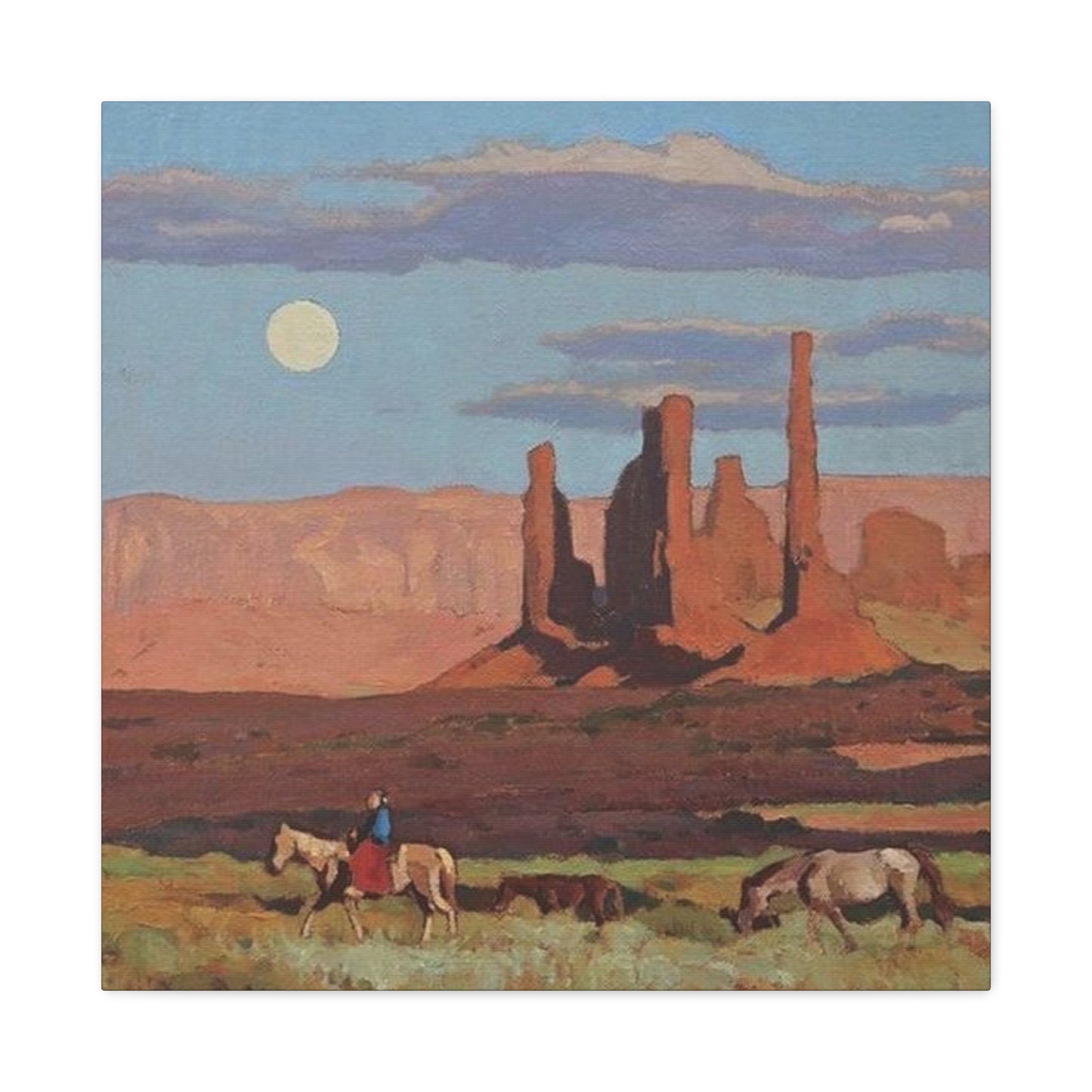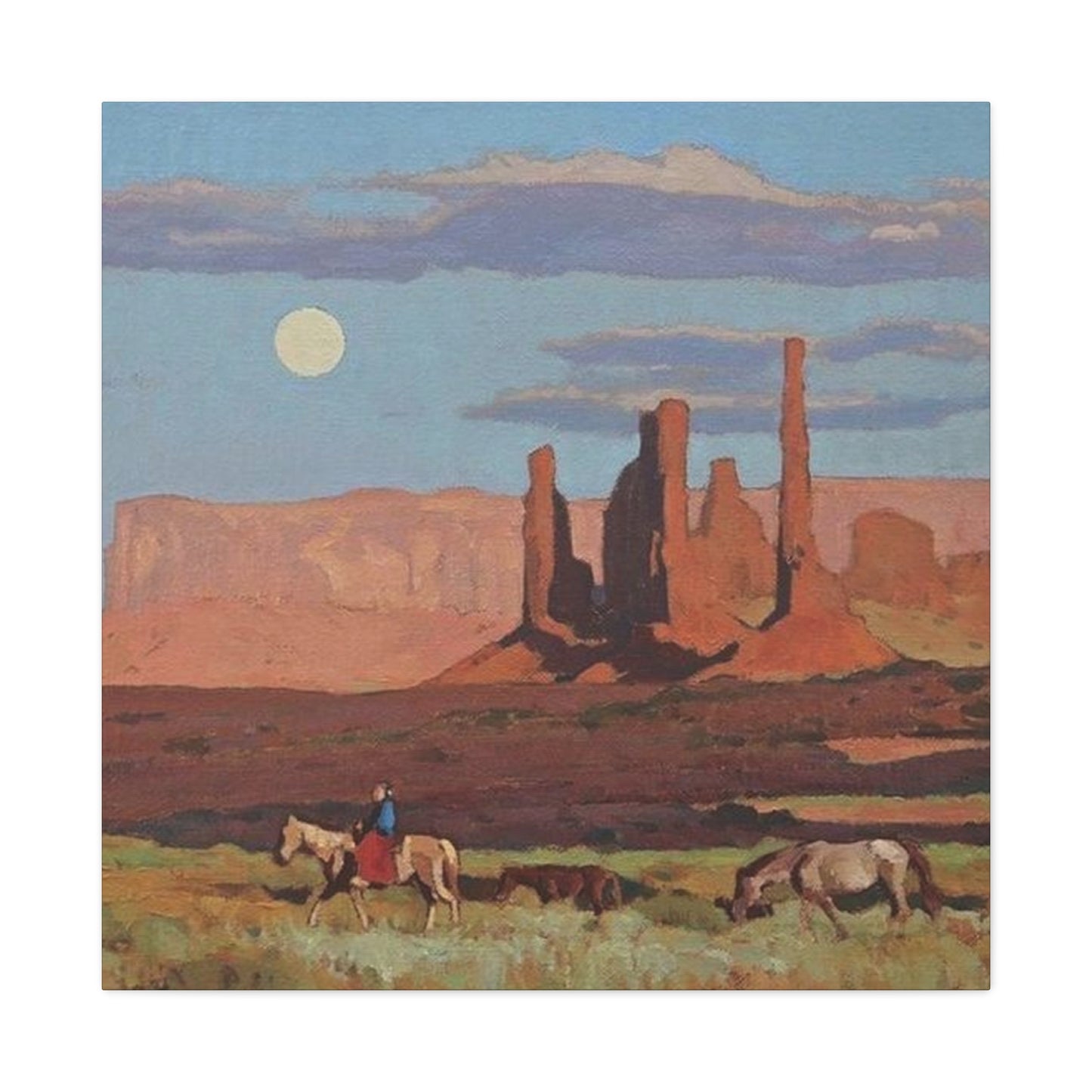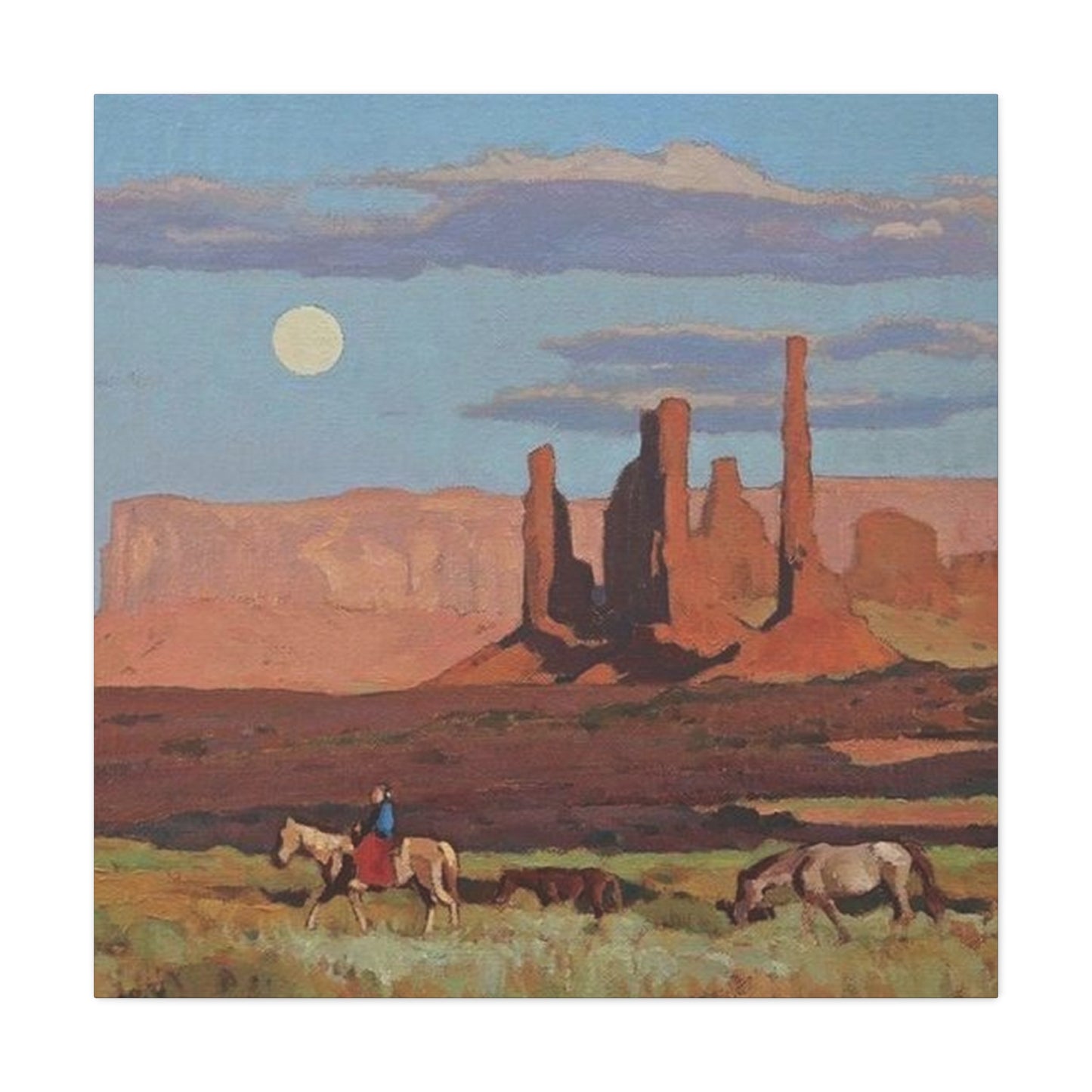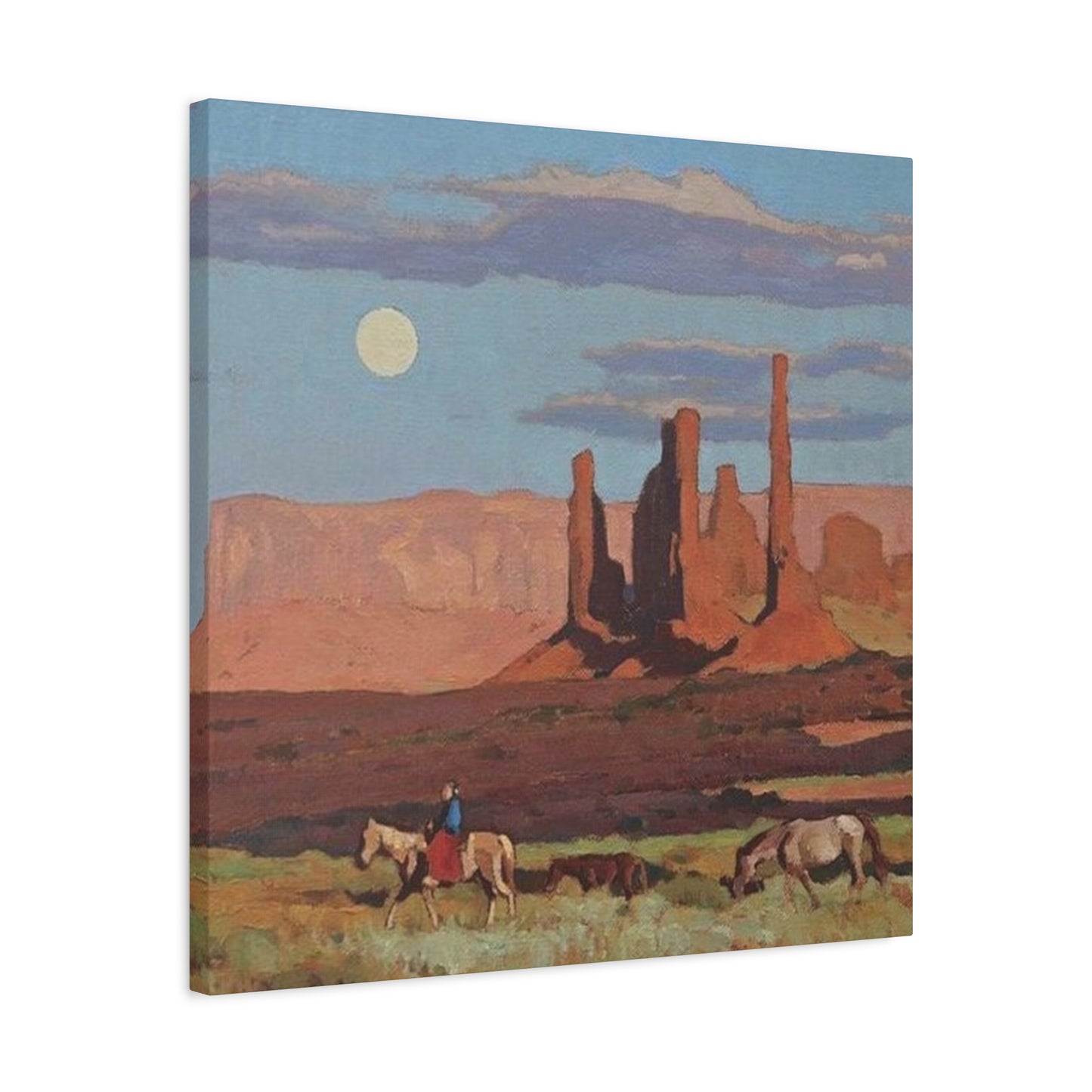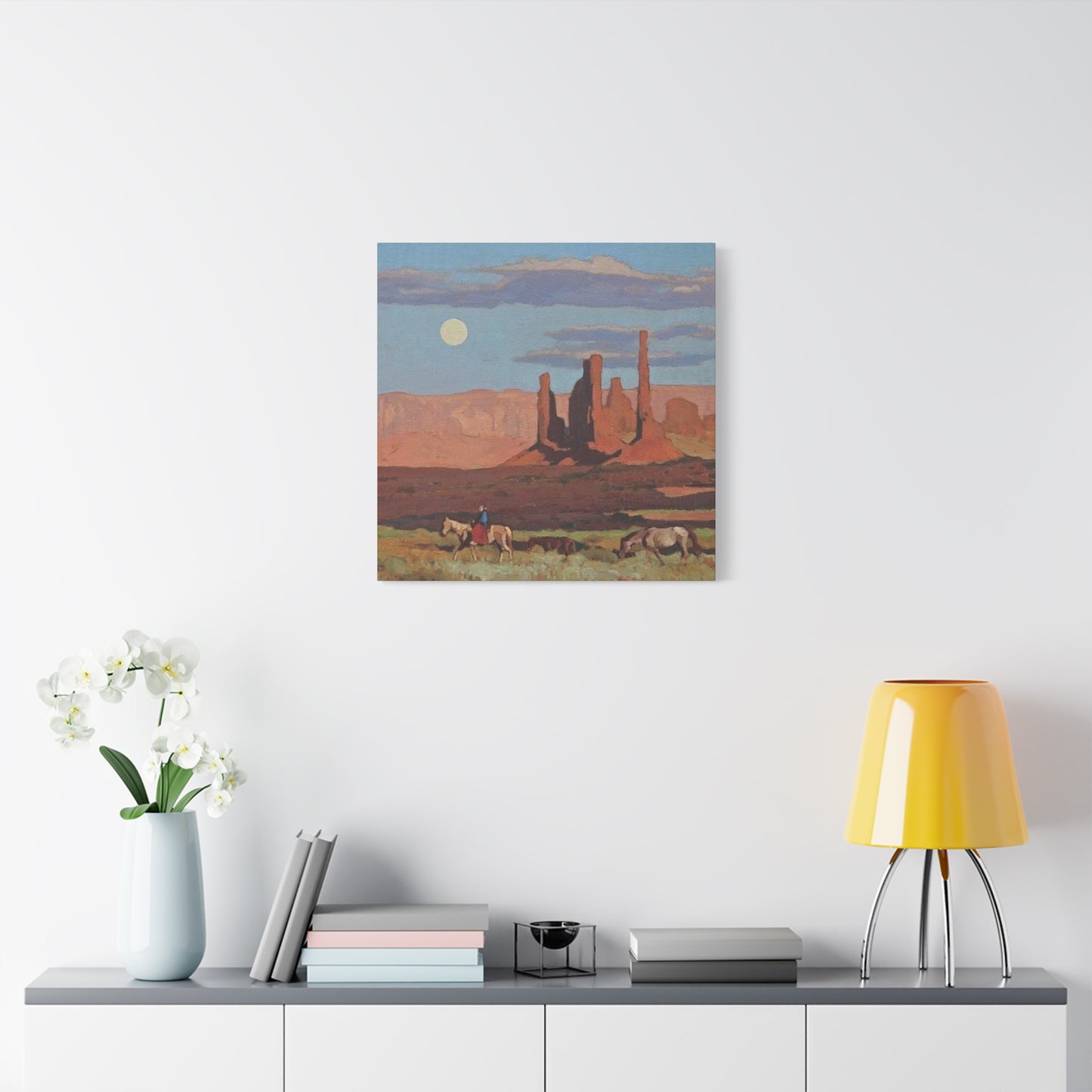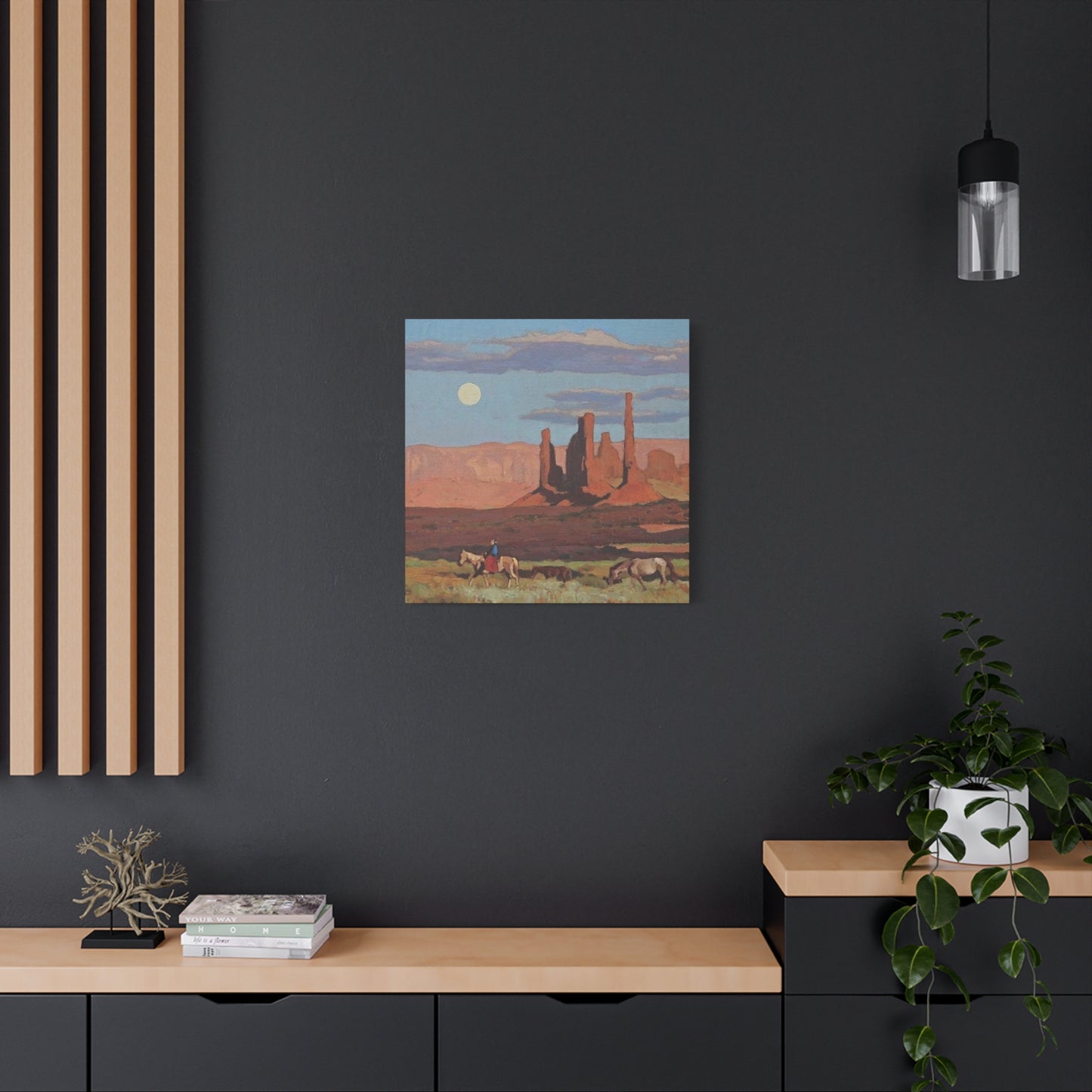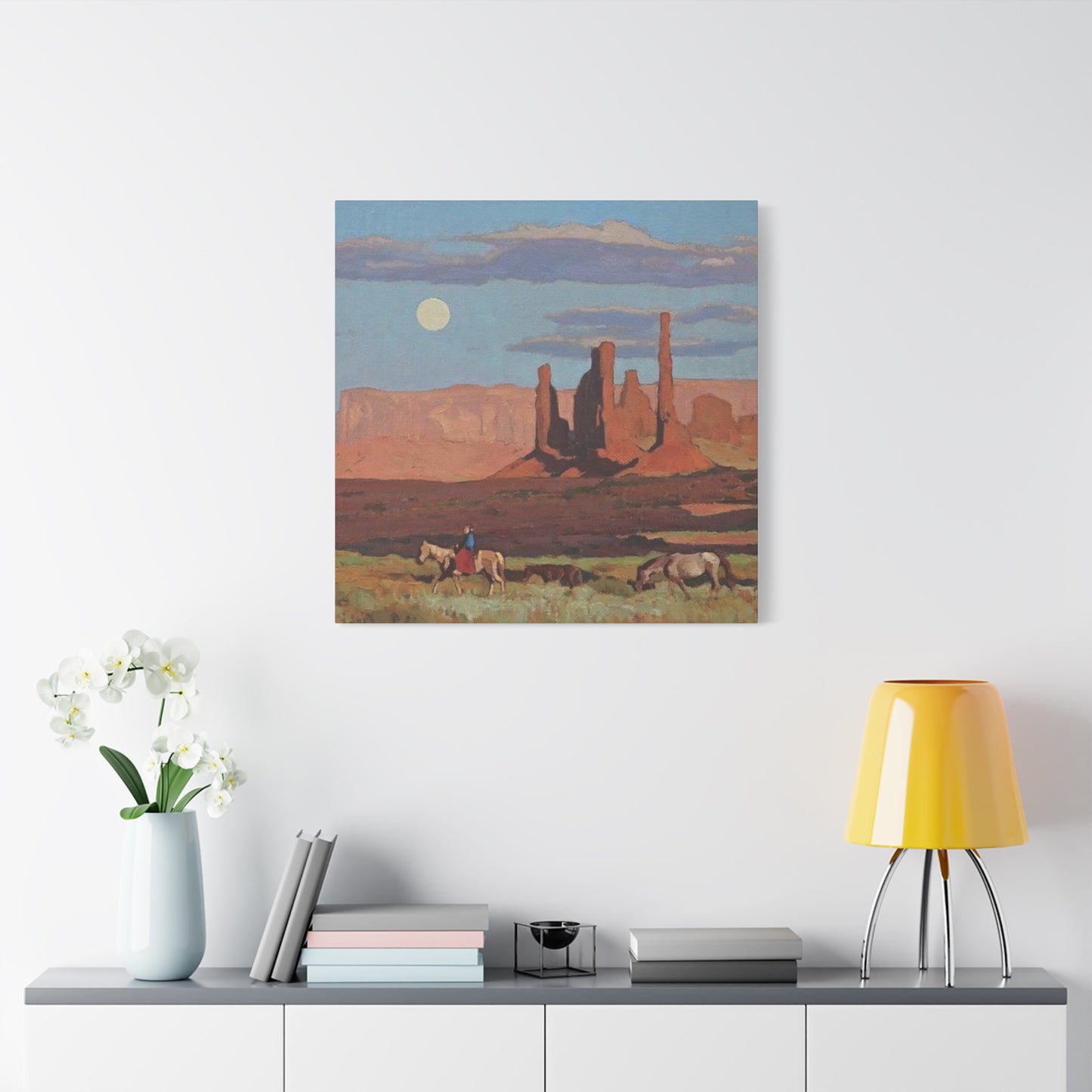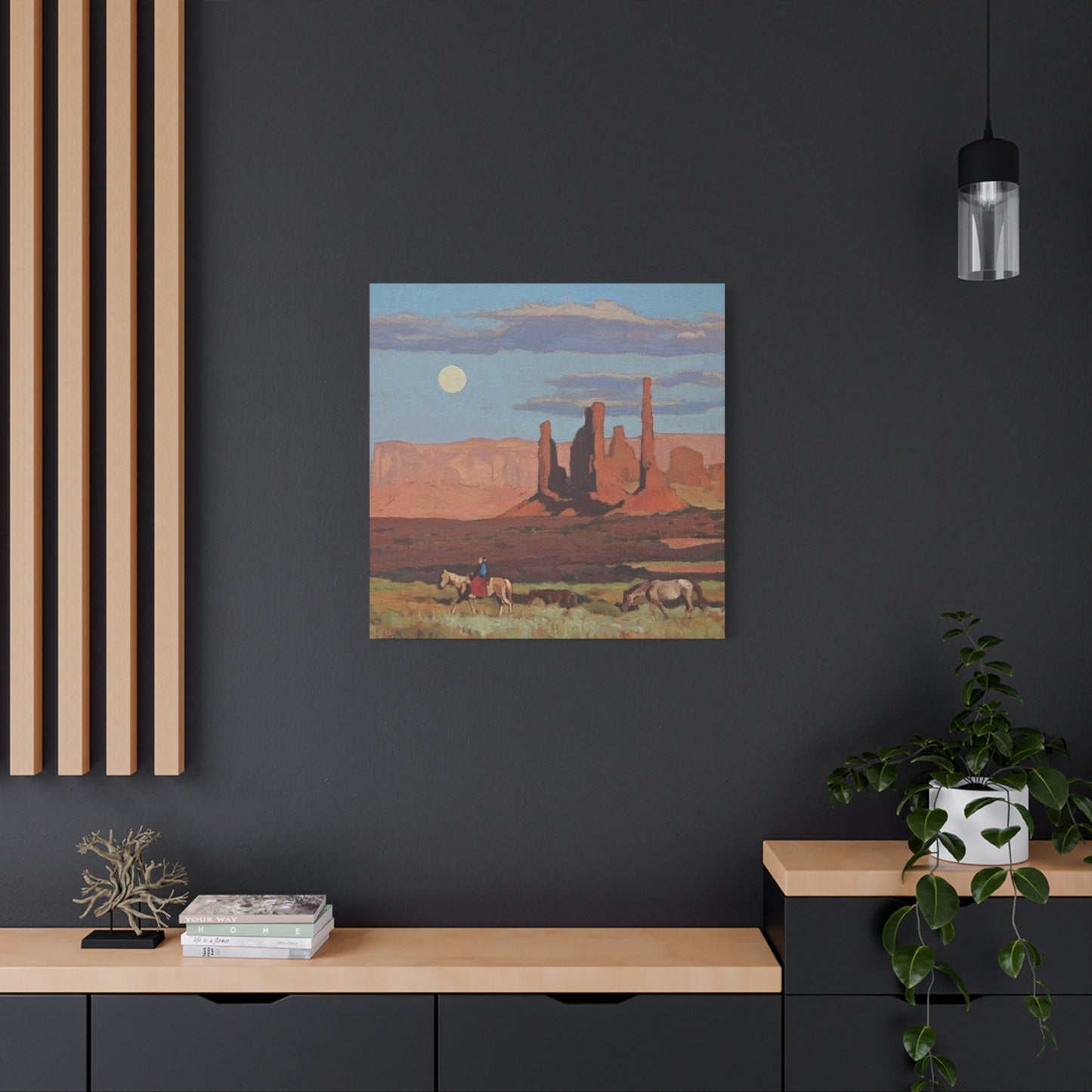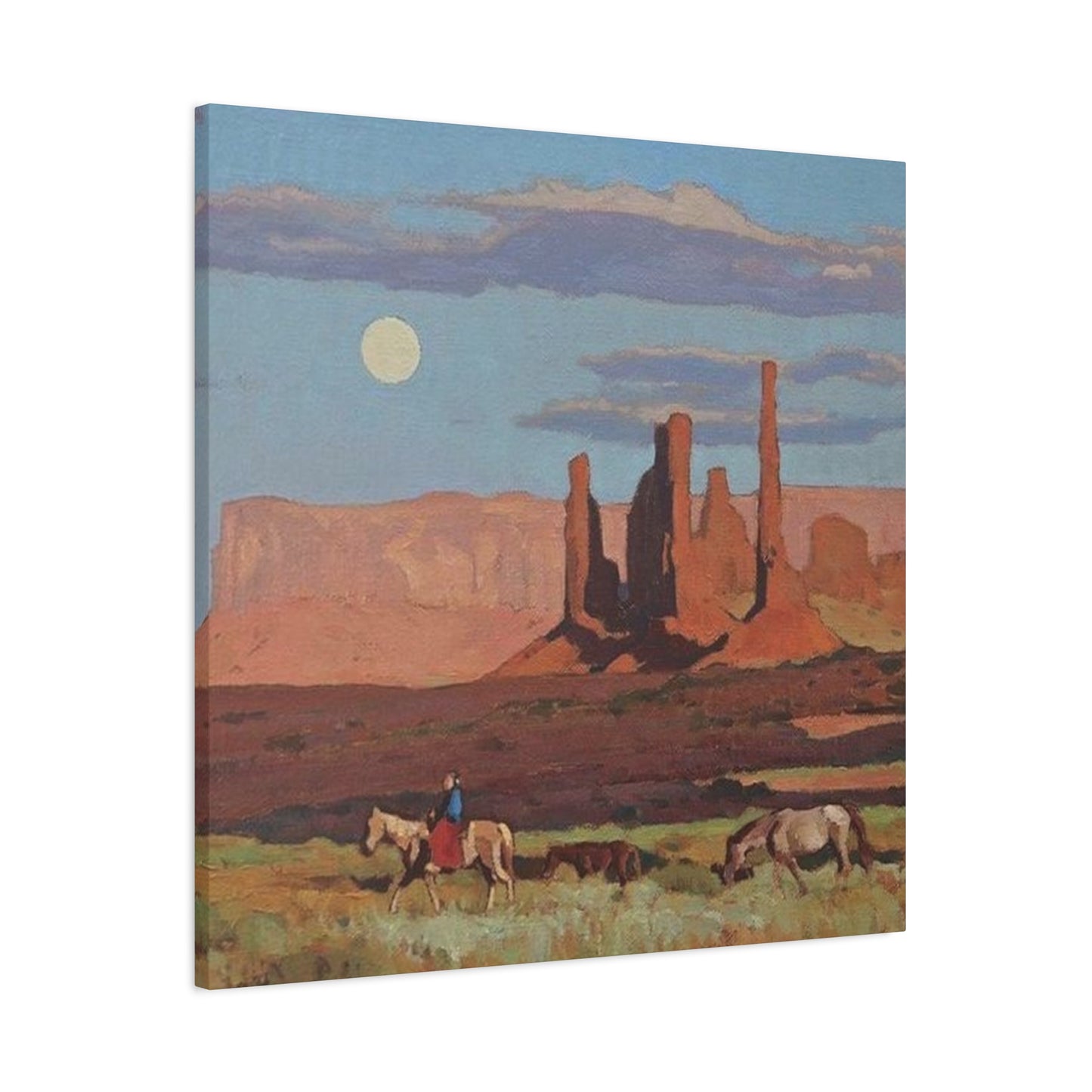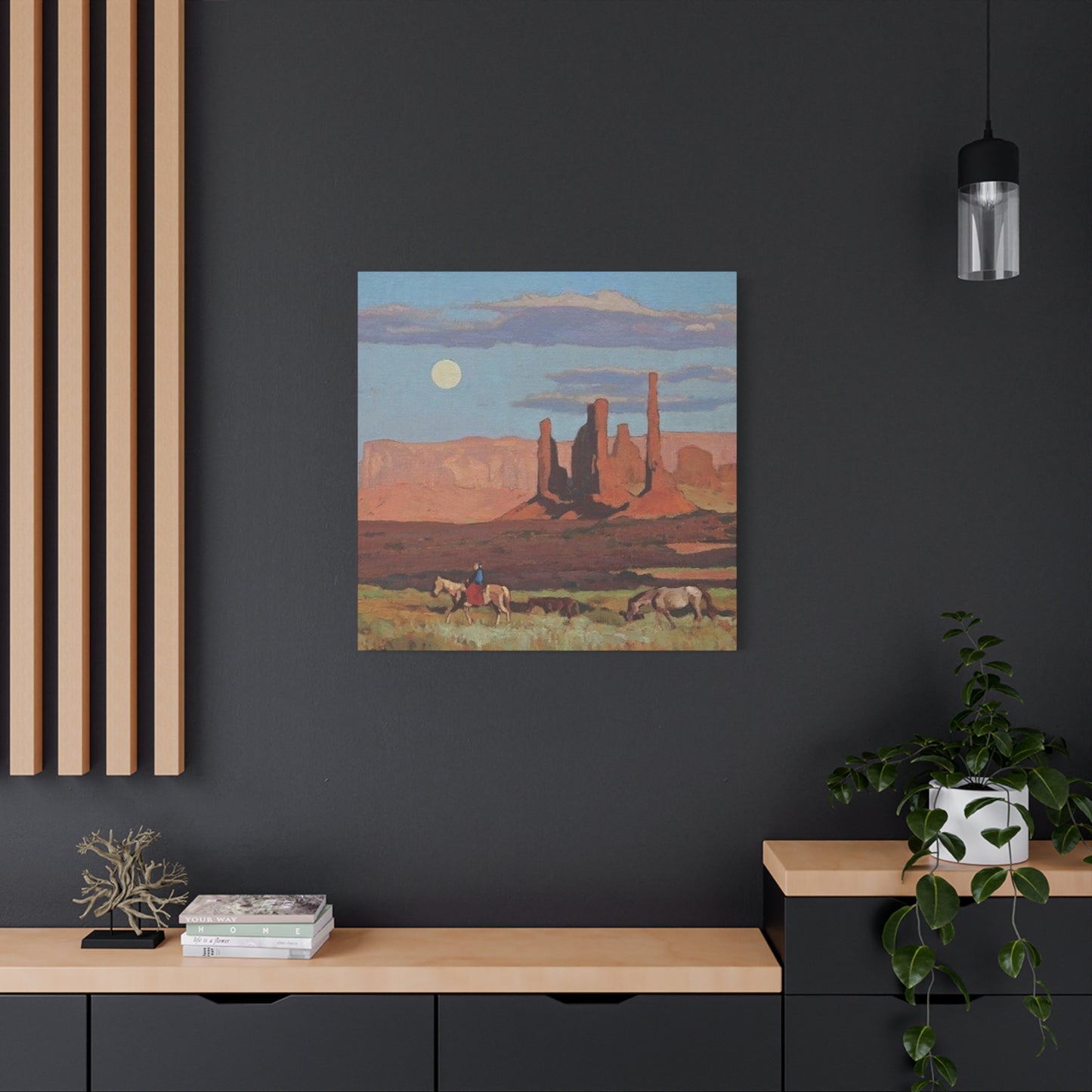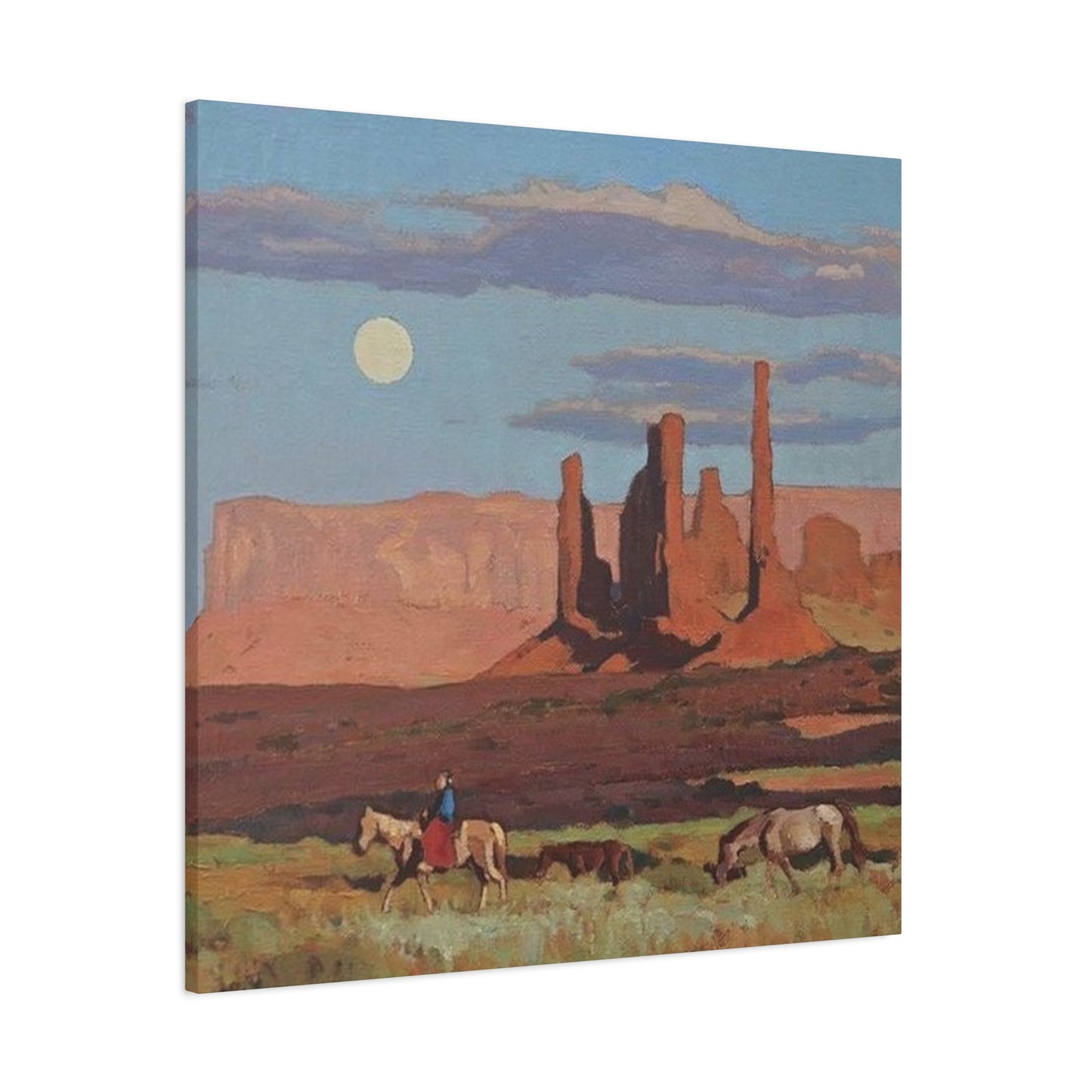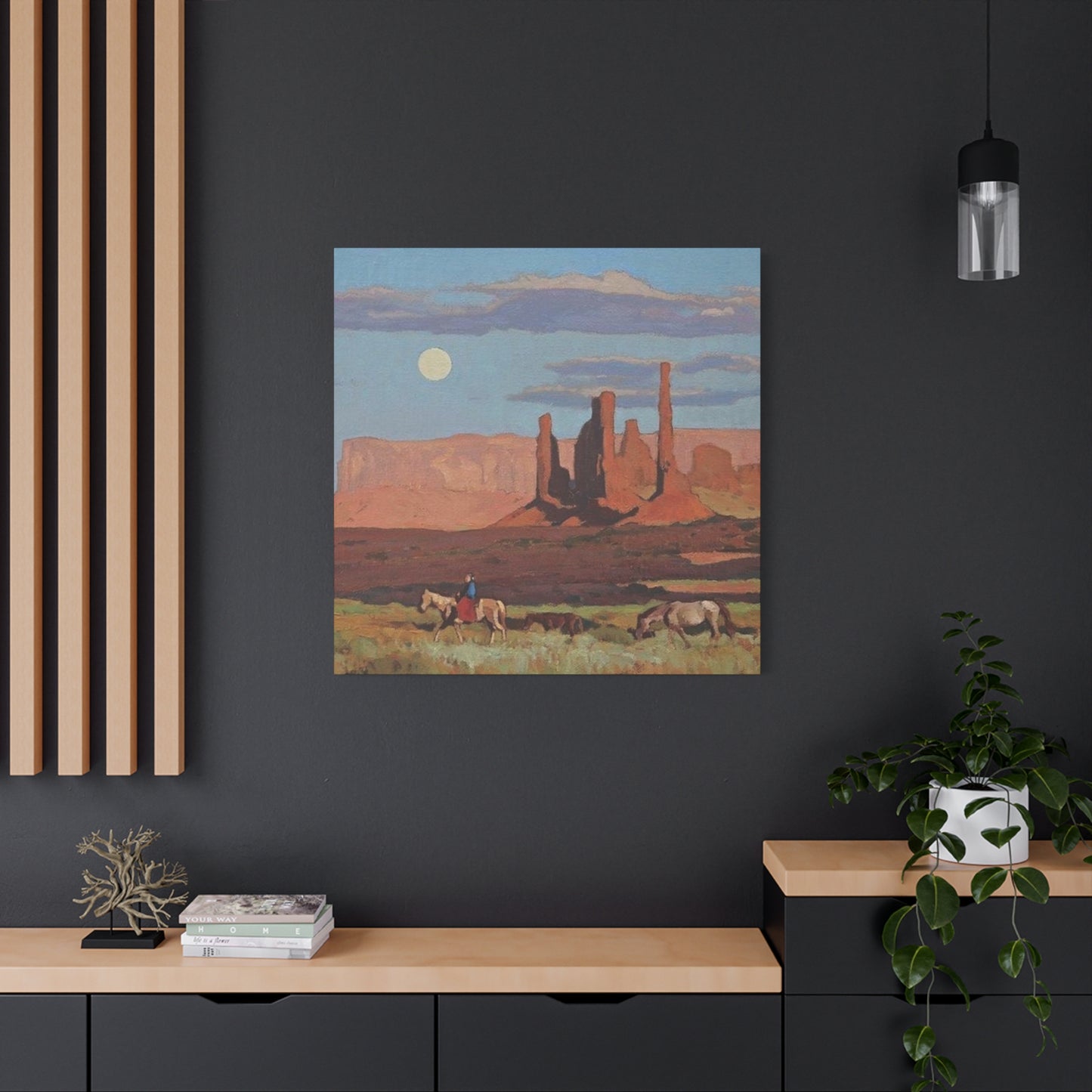Cowboys and Grand Canyon Wall Art Canvas Prints: Bringing Western Heritage into Your Home
The American West represents one of the most iconic and enduring themes in art, culture, and home decoration. Among the most sought-after pieces in this genre are cowboys and Grand Canyon wall art canvas prints, which capture the essence of frontier life and natural majesty in stunning visual displays. These artistic creations serve as windows into a bygone era while simultaneously bringing timeless beauty and character to modern living environments.
Canvas prints featuring cowboys and the Grand Canyon have become increasingly popular among homeowners, collectors, and art enthusiasts who appreciate the rugged beauty and historical significance of the American frontier. These pieces combine the romance of cowboy culture with the breathtaking grandeur of one of America's most magnificent natural wonders, creating artwork that resonates with viewers on multiple levels.
The appeal of cowboy and Grand Canyon canvas prints extends far beyond simple decoration. These artworks tell stories of adventure, perseverance, and the indomitable human spirit that defined the American West. They evoke feelings of freedom, wide-open horizons, and the pioneering spirit that built a nation. When displayed in homes, offices, or commercial establishments, these prints create focal points that spark conversation and inspire contemplation about America's rich heritage.
Significance of Cowboy Culture in American Art
Cowboys represent more than just cattle herders; they embody the American spirit of independence, hard work, and connection to the land. The cowboy era, spanning roughly from the 1860s to the 1890s, created lasting images and legends that continue to influence American culture today. This period saw the rise of cattle ranching, the development of the American West, and the creation of a unique cultural identity that would become synonymous with American values.
The historical significance of cowboys in American art cannot be overstated. Artists like Frederic Remington and Charles M. Russell captured the essence of cowboy life in their paintings and sculptures, creating iconic images that defined how Americans and the world would view the Old West. These artists documented not just the romanticized version of cowboy life but also the harsh realities of frontier existence, including the challenges of working with livestock, the dangers of the trail, and the isolation of ranch life.
Canvas prints featuring cowboy themes draw from this rich artistic tradition, offering contemporary audiences access to these powerful images and stories. Whether depicting a lone rider against a sunset backdrop, a cattle drive across vast plains, or cowboys gathered around a campfire, these artworks connect viewers to a pivotal period in American history. The authenticity of these images, even when stylized or interpreted through modern artistic techniques, maintains the emotional impact and cultural significance of the original cowboy experience.
The evolution of cowboy art has paralleled changes in American society and values. Early depictions focused on action and adventure, emphasizing the excitement and danger of frontier life. As the West became more settled and industrialized, cowboy art began to emphasize nostalgia and the loss of a simpler way of life. Contemporary cowboy canvas prints often blend these themes, presenting cowboys as both historical figures and symbols of enduring American values like self-reliance, courage, and respect for the natural world.
Modern interpretations of cowboy art in canvas prints also reflect contemporary artistic styles and techniques. While traditional realistic depictions remain popular, many artists now experiment with abstract elements, bold colors, and stylized compositions to create cowboy artwork that appeals to modern aesthetic sensibilities while maintaining connection to historical themes. This evolution ensures that cowboy canvas prints remain relevant and appealing to new generations of art collectors and home decorators.
The Majestic Grand Canyon as Artistic Inspiration
The Grand Canyon stands as one of the world's most awe-inspiring natural wonders, carved by the Colorado River over millions of years into a geological masterpiece that defies description. Its vast scale, intricate rock formations, and ever-changing colors have captivated artists for generations, making it one of the most frequently depicted landscapes in American art. The canyon's significance extends beyond its natural beauty to encompass cultural, spiritual, and scientific importance that resonates with people worldwide.
Artists have long been drawn to the Grand Canyon's unique combination of grandeur and detail. The canyon's layered rock formations tell the story of Earth's geological history, while its changing light conditions create an endless variety of colors and moods throughout the day. From the soft pastels of dawn to the fiery oranges and reds of sunset, the Grand Canyon provides artists with a constantly shifting palette of natural beauty that challenges and inspires creative expression.
The challenge of capturing the Grand Canyon's immensity on canvas has led artists to develop innovative techniques and approaches. Some focus on panoramic views that emphasize the canyon's vast scale, while others concentrate on specific details like rock formations, vegetation, or the play of light and shadow across the canyon walls. The most successful Grand Canyon artwork manages to convey both the overall magnificence of the landscape and the intricate beauty of its individual components.
Canvas prints featuring the Grand Canyon offer viewers the opportunity to experience this natural wonder from the comfort of their homes. High-quality reproductions can capture the subtle color gradations and dramatic contrasts that make the Grand Canyon so visually compelling. Whether depicting the canyon at sunrise, sunset, or during the dramatic lighting conditions of a storm, these prints bring the power and beauty of this natural landmark into domestic and commercial environments.
The spiritual and emotional impact of Grand Canyon imagery extends beyond mere visual appreciation. Many viewers report feelings of peace, inspiration, and connection to nature when viewing Grand Canyon artwork. This emotional resonance makes Grand Canyon canvas prints particularly effective as focal points in meditation rooms, offices, and living areas where people seek respite from the stresses of modern life.
The scientific and educational value of Grand Canyon artwork should not be overlooked. These prints can serve as conversation starters about geology, natural history, and environmental conservation. They remind viewers of the importance of preserving natural landmarks for future generations and can inspire interest in visiting and learning more about this remarkable natural wonder.
Canvas Printing Technology and Quality Considerations
The quality of canvas prints has improved dramatically with advances in digital printing technology, color management systems, and canvas materials. Modern canvas printing processes can reproduce artwork with exceptional detail, color accuracy, and longevity, making high-quality reproductions accessible to a broader audience than ever before. Understanding the technical aspects of canvas printing helps consumers make informed decisions when selecting cowboy and Grand Canyon wall art for their collections.
Digital printing technology has revolutionized the canvas print industry by enabling precise control over color reproduction, detail resolution, and print consistency. High-end canvas printers use multiple ink cartridges to achieve accurate color matching and smooth gradations, particularly important when reproducing the subtle color variations found in Grand Canyon landscapes or the rich earth tones common in cowboy artwork. The resolution capabilities of modern printers ensure that fine details in artwork are preserved, from the texture of cowboy clothing to the intricate rock formations of canyon walls.
Canvas material selection plays a crucial role in the final quality and appearance of prints. High-quality canvas fabrics provide the ideal surface for ink adhesion while maintaining the texture and appearance associated with traditional painted canvases. Cotton and polyester blends offer different characteristics in terms of texture, durability, and color absorption, with premium options providing museum-quality results that can last for decades with proper care.
The stretching and mounting process significantly impacts the final presentation of canvas prints. Professional stretching ensures that the canvas maintains proper tension without distorting the image, while quality mounting hardware provides secure attachment to wall surfaces. Gallery-wrap techniques, where the image extends around the edges of the canvas frame, create a finished appearance that eliminates the need for additional framing while maintaining the artwork's visual impact.
Color management systems ensure that the colors in the final print accurately represent the artist's original intentions. Professional printing services use calibrated monitors and standardized color profiles to maintain consistency between the digital file and the printed result. This attention to color accuracy is particularly important for Grand Canyon artwork, where subtle color variations can dramatically affect the emotional impact of the image.
Protective coatings and treatments can enhance the longevity and appearance of canvas prints. UV-resistant coatings help prevent color fading when prints are displayed in areas with natural light exposure, while moisture-resistant treatments protect against humidity-related damage. These protective measures are especially important for artwork displayed in high-traffic areas or environments with challenging lighting conditions.
Choosing the Right Size and Placement for Maximum Impact
The size and placement of cowboys and Grand Canyon wall art canvas prints significantly influence their visual impact and effectiveness as decorative elements. Proper sizing ensures that artwork complements rather than overwhelms the surrounding environment, while strategic placement maximizes the emotional and aesthetic impact of the pieces. Understanding the principles of art placement and sizing helps homeowners and decorators create cohesive and visually appealing arrangements.
Large-format canvas prints work exceptionally well for cowboy and Grand Canyon themes because these subjects naturally lend themselves to dramatic, sweeping presentations. A large Grand Canyon vista can create the illusion of looking through a window onto the actual landscape, while an oversized cowboy scene can establish a commanding presence that sets the tone for an entire room. However, the scale must be appropriate to the room size to avoid overwhelming smaller environments or appearing insignificant in larger ones.
The relationship between artwork size and viewing distance affects how viewers experience the piece. Large prints benefit from viewing distances that allow the full composition to be appreciated, while smaller prints may be more effective in intimate settings where viewers can appreciate fine details and craftsmanship. The golden ratio and other classical proportion principles can guide size selection to ensure that artwork feels naturally balanced within its environment.
Placement height significantly impacts viewer engagement with canvas prints. Eye-level placement, typically 57-60 inches from floor to center of artwork, provides optimal viewing angles for most people. However, this standard may need adjustment based on furniture placement, ceiling height, and the specific viewing context. Cowboy and Grand Canyon scenes often benefit from slightly higher placement to enhance their sense of grandeur and openness.
Lighting considerations play a crucial role in artwork placement and effectiveness. Natural light can enhance the colors and details in canvas prints, but direct sunlight should be avoided to prevent fading and heat damage. Artificial lighting systems, including track lighting, picture lights, and general room illumination, can be used to highlight artwork and create dramatic effects that enhance the viewing experience.
The relationship between artwork and surrounding furniture and architectural elements affects the overall design harmony. Canvas prints should complement rather than compete with other room elements, with consideration given to color schemes, style consistency, and visual balance. Cowboy and Grand Canyon themes work well with rustic, traditional, and contemporary design styles when properly coordinated with other decorative elements.
Color Psychology and Emotional Impact of Western Themes
The colors commonly found in cowboy and Grand Canyon canvas prints carry significant psychological and emotional associations that contribute to their popularity and effectiveness as decorative elements. Understanding color psychology helps explain why these artworks resonate so strongly with viewers and how they can be used to create specific moods and atmospheres in residential and commercial environments.
Earth tones, including browns, tans, and ochres, dominate cowboy artwork and reflect the natural colors of leather, wood, and prairie landscapes. These colors are psychologically associated with stability, reliability, and connection to nature, making them particularly effective for creating comfortable and welcoming environments. The warmth of these colors can make rooms feel more intimate and cozy while maintaining a sense of masculine strength and ruggedness associated with cowboy culture.
The dramatic reds, oranges, and purples found in Grand Canyon artwork evoke feelings of energy, passion, and spiritual connection. These warm colors can stimulate conversation and create focal points that draw attention and admiration. The interplay between warm and cool colors in Grand Canyon scenes, including the blues and violets of distant formations, creates visual depth and complexity that keeps viewers engaged and interested.
Blue tones, often found in sky elements and distant mountains in both cowboy and Grand Canyon artwork, contribute feelings of peace, openness, and freedom. These colors can make rooms feel larger and more open while providing a sense of calm that balances the more energetic warm tones. The vast skies common in Western landscapes symbolize unlimited possibilities and freedom from constraints, themes that resonate with viewers seeking escape from urban stress.
Green elements, representing vegetation and natural growth, add life and vitality to Western-themed artwork. These colors are associated with renewal, growth, and harmony with nature, values that align with the environmental themes present in much cowboy and Grand Canyon art. The presence of green can soften the harder edges of desert landscapes and create a more balanced and livable color scheme.
The psychological impact of color extends beyond individual associations to include cultural and historical meanings. The color palette of the American West has become iconic in its own right, instantly recognizable and emotionally evocative. This cultural conditioning enhances the effectiveness of cowboy and Grand Canyon artwork by tapping into deeply embedded associations with American history, values, and identity.
Artistic Styles and Techniques in Western Canvas Art
The diversity of artistic styles and techniques used in cowboy and Grand Canyon canvas prints reflects the rich tradition of Western art and the ongoing evolution of artistic expression. From highly realistic depictions to abstract interpretations, these varied approaches offer something for every taste and decorating style while maintaining connection to the essential themes and emotions of the American West.
Realistic or representational art remains one of the most popular styles for cowboy and Grand Canyon canvas prints. This approach focuses on accurate depiction of subjects, with careful attention to detail, proportion, and natural coloring. Realistic cowboy scenes might feature meticulously rendered horses, authentic period clothing, and accurate landscape details, while Grand Canyon artwork in this style emphasizes geological accuracy and faithful color reproduction. The appeal of realistic Western art lies in its ability to transport viewers into believable scenes that feel historically and geographically authentic.
Impressionistic techniques bring a softer, more emotional approach to Western themes. Artists working in this style might use loose brushstrokes, vibrant colors, and emphasis on light and atmosphere rather than precise detail. Impressionistic cowboy scenes might capture the movement and energy of a cattle drive or the peaceful mood of cowboys around a campfire, while Grand Canyon impressionism might focus on the changing light conditions and atmospheric effects that make the canyon so visually dynamic.
Contemporary and modern interpretations of Western themes incorporate current artistic trends and techniques while maintaining connection to traditional subjects. These might include bold color schemes that depart from natural palettes, geometric compositions that emphasize design elements over literal representation, or mixed-media approaches that combine photography with painting techniques. Modern Western art appeals to viewers who appreciate traditional themes but prefer contemporary aesthetic approaches.
Abstract Western art pushes the boundaries of traditional representation while maintaining emotional and thematic connections to cowboy and Grand Canyon subjects. Abstract cowboy art might use color, form, and composition to evoke the feeling of the open range without literal representation, while abstract Grand Canyon pieces might focus on the geological patterns and color relationships that define the landscape. This approach allows for more personal interpretation and can create striking decorative elements that complement modern design sensibilities.
Photographic canvas prints offer yet another approach to Western themes, capturing real cowboys at work or stunning Grand Canyon vistas with the immediacy and authenticity that only photography can provide. High-quality photographic prints can reveal details and perspectives that might be impossible to achieve through traditional painting techniques, offering viewers intimate glimpses into contemporary ranch life or breathtaking landscape views.
The choice of artistic style significantly impacts the emotional and decorative effect of canvas prints. Realistic artwork might appeal to history enthusiasts and traditionalists, while abstract pieces might better suit contemporary design schemes. Understanding these different approaches helps buyers select artwork that best fits their personal preferences and decorating objectives.
Regional Variations and Cultural Authenticity
The American West encompasses diverse geographical regions, each with distinct cultural traditions, landscapes, and artistic interpretations. Cowboy and Grand Canyon canvas prints reflect this regional diversity, offering viewers access to the unique characteristics and cultural authenticity of different Western areas. Understanding these regional variations enhances appreciation for the artwork and helps buyers select pieces that reflect specific geographical and cultural interests.
The Southwest region, encompassing Arizona, New Mexico, Nevada, and parts of surrounding states, provides the geographical context for Grand Canyon artwork and influences much cowboy art as well. This region is characterized by desert landscapes, dramatic rock formations, and Native American cultural influences that appear in many Western art pieces. Canvas prints from this region might feature distinctive architectural elements like adobe buildings, unique vegetation such as saguaro cacti, and the warm color palettes associated with desert environments.
The Great Plains region, stretching from Texas north to Montana and the Dakotas, represents the classic cowboy territory of cattle drives and open range ranching. Artwork from this region typically emphasizes vast horizons, grassland landscapes, and the relationship between cowboys and cattle. The cultural authenticity of Plains cowboy art might include specific details like particular horse breeds, authentic gear and clothing, and the distinctive landscape features that defined cowboy life in these areas.
Mountain West regions, including Colorado, Wyoming, Utah, and Montana, offer different landscape and cultural elements that influence Western artwork. High altitude environments, snow-capped peaks, and alpine meadows create different settings for cowboy scenes, while the mining and logging industries that developed alongside ranching provide additional thematic elements. Canvas prints from mountain regions might feature different clothing styles suited to colder climates and landscape elements unique to high-altitude environments.
California's contribution to Western art reflects the state's unique position as both the destination of Western expansion and a center of Western mythology through Hollywood and popular culture. California Western art might blend Mexican cultural influences with traditional cowboy themes, while also incorporating the distinctive landscapes of the Sierra Nevada mountains and Central Valley. The Hollywood influence has created its own artistic tradition that sometimes emphasizes the romanticized aspects of cowboy culture over strict historical accuracy.
Cultural authenticity in Western art extends beyond geographical considerations to include historical accuracy and respect for the diverse peoples who shaped the American West. Authentic cowboy art acknowledges the contributions of Mexican vaqueros who originated many cowboy techniques and traditions, as well as the Native American peoples whose lands became ranch territory. This cultural complexity adds depth and richness to Western artwork while promoting more complete understanding of Western history.
The verification of cultural authenticity in canvas prints involves research into historical accuracy, geographical correctness, and cultural sensitivity. Reputable publishers and artists often provide information about the historical and cultural context of their work, helping buyers understand the authenticity and significance of their purchases. This attention to authenticity ensures that canvas prints serve not just as decoration but as educational and culturally valuable additions to home and office environments.
Collecting and Investing in Western Wall Art
The market for cowboy and Grand Canyon wall art canvas prints encompasses both decorative purchases and serious art collecting, with some pieces appreciating significantly in value over time. Understanding the factors that influence collectibility and investment potential helps buyers make informed decisions about their purchases while building collections that provide both aesthetic pleasure and potential financial returns.
Artist reputation plays a crucial role in the collectible value of Western canvas prints. Established artists with strong market presence and critical recognition typically produce work that maintains or increases in value over time. Emerging artists whose work shows exceptional quality and unique vision may represent investment opportunities for collectors willing to take calculated risks. The distinction between original artwork and high-quality reproductions affects collectibility, with original pieces generally commanding higher prices and showing greater appreciation potential.
Limited edition prints offer a middle ground between original artwork and unlimited reproductions, providing collectors with exclusivity while maintaining relative affordability. The size of the edition, numbering system, and artist involvement in the printing process all influence the value and collectibility of limited editions. Hand-signed and numbered pieces typically command premiums over unsigned reproductions, while artist proofs and other special designations can add additional value.
Provenance and documentation contribute significantly to the long-term value of collectible Western art. Certificates of authenticity, exhibition histories, and publication records help establish the legitimacy and importance of artworks. Collectors should maintain careful records of their purchases, including purchase receipts, authenticity certificates, and any relevant documentation that might affect future value or resale potential.
Market trends in Western art collecting reflect broader cultural interests and economic conditions. Periods of national introspection or renewed interest in American history often boost demand for Western-themed artwork, while economic downturns might depress prices across all art categories. Understanding these market cycles can help collectors time their purchases and sales for optimal results.
The condition of canvas prints significantly affects their collectible value and long-term investment potential. Proper storage, handling, and display practices help preserve artwork and maintain its value over time. Factors like color fading, physical damage, and improper mounting can dramatically reduce the value of collectible prints, making proper care and conservation essential for serious collectors.
Geographic markets for Western art vary significantly, with stronger demand typically found in Western states and areas with cultural connections to cowboy heritage. This regional variation can affect both purchase prices and resale opportunities, with collectors sometimes finding better values by purchasing artwork outside of primary market areas and selling in regions with stronger demand.
Decorating Themes and Style Coordination
Successfully incorporating cowboy and Grand Canyon wall art canvas prints into decorating schemes requires careful consideration of style coordination, color harmony, and thematic consistency. These artworks can enhance a wide variety of decorating styles when properly selected and integrated with other design elements, creating cohesive and visually appealing environments that reflect personal taste and cultural interests.
Rustic and lodge-style decorating provides the most natural context for Western-themed canvas prints. This style emphasizes natural materials like wood and stone, earth-tone color schemes, and furniture with substantial, handcrafted appearances. Cowboy and Grand Canyon artwork complements these elements perfectly, with the natural colors and themes of the artwork harmonizing with the overall rustic aesthetic. Log cabin interiors, mountain lodges, and ranch-style homes provide ideal settings for this decorating approach.
Traditional and classic decorating styles can also accommodate Western artwork when carefully coordinated with appropriate color schemes and supporting elements. Rich wood finishes, leather furniture, and classic textile patterns can create sophisticated settings that honor the historical significance of cowboy culture while maintaining elegant and refined appearances. The key lies in selecting artwork with more refined color palettes and avoiding overly rustic or casual supporting elements.
Contemporary and modern design schemes might seem incompatible with Western themes, but thoughtful selection and placement can create striking and unexpected design successes. Abstract or stylized Western artwork can bridge the gap between traditional themes and contemporary aesthetics, while the bold colors and dramatic compositions of Grand Canyon art can provide focal points in minimalist modern settings. The contrast between sleek modern furnishings and traditional Western themes can create dynamic and visually interesting environments.
Southwestern and Adobe styles represent specialized decorating approaches that naturally complement Western artwork. These styles incorporate Native American and Mexican cultural elements, earth-tone color schemes, and architectural details like exposed beams and tile floors. Cowboy and Grand Canyon canvas prints work exceptionally well in these settings, with the artwork supporting and enhancing the overall cultural theme while providing visual focal points that tie the design together.
Industrial and loft-style decorating can benefit from the warmth and organic qualities that Western artwork brings to otherwise stark environments. The natural themes and earth tones of cowboy and Grand Canyon art can soften the hard edges of exposed brick, steel, and concrete while providing cultural and historical context that humanizes industrial environments. Large-format canvas prints work particularly well in high-ceiling loft environments where their scale can be properly appreciated.
Color coordination between artwork and surrounding design elements requires careful attention to avoid conflicts while maintaining visual interest. The earth tones common in Western art provide neutral bases that work well with many color schemes, while the more dramatic colors found in Grand Canyon art might require more careful coordination. Understanding color theory and the emotional effects of different color combinations helps create harmonious environments that enhance rather than compete with the artwork.
Maintenance and Care for Canvas Prints
Proper maintenance and care significantly extend the life and appearance of cowboy and Grand Canyon wall art canvas prints while preserving their investment value and aesthetic appeal. Understanding the specific requirements for canvas print care helps owners protect their artwork from common forms of damage and deterioration while maintaining optimal display conditions.
Environmental factors pose the greatest threats to canvas print longevity. Direct sunlight exposure can cause irreversible color fading, particularly in the warm colors that dominate Western artwork. UV-filtering window films, protective glazing, or strategic placement away from direct sunlight help prevent this type of damage. Additionally, extreme temperature fluctuations and high humidity levels can cause canvas expansion and contraction that leads to cracking or other structural damage.
Cleaning canvas prints requires gentle techniques that remove dust and dirt without damaging the surface or colors. Soft-bristled brushes or lint-free cloths can remove surface dust, while slightly damp cleaning should be limited to specific areas and performed with extreme caution. Commercial canvas cleaning products designed for art conservation provide safer alternatives to household cleaners that might contain chemicals harmful to canvas or inks.
Storage considerations become important for collectors with multiple pieces or artwork that requires temporary removal from display. Canvas prints should be stored flat or rolled with the image facing outward around large-diameter tubes. Protective wrapping materials should be acid-free and breathable to prevent chemical damage and moisture accumulation. Climate-controlled storage environments provide optimal protection for valuable pieces during extended storage periods.
Professional conservation services may be required for valuable or damaged canvas prints. Art conservators possess specialized knowledge and equipment for addressing serious damage, color restoration, and structural repairs that exceed the capabilities of typical maintenance procedures. The cost of professional conservation must be weighed against the value and importance of the artwork, with decisions based on both financial and sentimental considerations.
Preventive measures provide the most cost-effective approach to canvas print care. Proper mounting hardware prevents stress and damage from inadequate support, while protective measures like UV filtering and climate control prevent environmental damage. Regular inspection schedules help identify potential problems before they become serious, allowing for timely intervention that prevents extensive damage.
Insurance considerations for valuable canvas prints include documentation of condition and value, proper storage and display practices, and coverage for various types of damage. Homeowners' insurance policies may not provide adequate coverage for art collections, making specialized art insurance worth considering for valuable pieces. Accurate appraisals and documentation help ensure proper coverage and successful claims resolution when damage occurs.
Framing Options and Presentation Techniques
The presentation of cowboy and Grand Canyon wall art canvas prints significantly impacts their visual effectiveness and overall aesthetic appeal. While many canvas prints are designed to be displayed without traditional frames, various presentation options can enhance the artwork while providing additional protection and visual sophistication.
Gallery wrap presentation has become the standard for most canvas prints, with the image extending around the edges of the stretcher frame to create a finished appearance from all angles. This technique eliminates the need for traditional framing while maintaining professional presentation standards. The depth of the stretcher frame, typically ranging from three-quarters of an inch to two inches, affects the shadow cast by the artwork and its overall visual presence on the wall.
Traditional framing options for canvas prints include both matted and unmatted presentations, with frame styles ranging from simple and contemporary to ornate and traditional. Western-themed artwork often benefits from frames that complement the rustic or traditional nature of the subject matter, such as distressed wood frames, wrought iron elements, or leather-wrapped options. The frame should enhance rather than overwhelm the artwork while providing protection from environmental hazards.
Multiple piece presentations, such as diptychs and triptychs, offer opportunities to create dramatic wall displays that might not be possible with single pieces. Cowboy and Grand Canyon themes lend themselves well to panoramic presentations that can capture the sweep and grandeur of Western landscapes. Proper spacing and alignment become crucial factors in the success of multi-piece displays, with consistent spacing and level mounting essential for professional appearances.
Shadow box presentations provide three-dimensional display options that can incorporate related artifacts and materials along with canvas prints. Western-themed shadow boxes might include items like antique spurs, horseshoes, or period photographs that enhance the historical context of the artwork. These presentations work particularly well in restaurants, museums, and themed entertainment venues where educational or nostalgic elements support the overall design concept.
Lighting design specifically created for artwork can dramatically enhance the viewing experience and emotional impact of canvas prints. Track lighting systems offer flexibility for illuminating multiple pieces or adjusting lighting angles as artwork is changed or rearranged. Picture lights mounted directly to frames provide focused illumination that highlights details and colors while creating dramatic lighting effects. LED technology has revolutionized art lighting by providing energy-efficient options with excellent color rendering and minimal heat production.
Alternative presentation techniques include floating mounts, where canvas prints appear to hover slightly away from the wall, and museum-style mounting systems that allow for easy changing and rearrangement of artwork. These sophisticated presentation methods work particularly well in commercial settings or homes where artwork is frequently rotated or where presentation quality is paramount.
Commercial Applications and Business Settings
Cowboy and Grand Canyon wall art canvas prints find extensive applications in commercial and business settings where their themes and visual appeal can enhance customer experiences, reinforce brand identities, and create memorable environments. Understanding the specific requirements and opportunities for commercial artwork applications helps business owners maximize the impact of their decorative investments.
Restaurant and hospitality applications represent major markets for Western-themed artwork, particularly in establishments that emphasize regional cuisine, rustic atmospheres, or Western themes. Steakhouses, barbecue restaurants, and Western-themed dining establishments use cowboy artwork to reinforce their brand identities and create authentic atmospheres that enhance the dining experience. Hotels and resorts in Western regions often incorporate Grand Canyon and cowboy artwork to reflect their geographical locations and appeal to tourists seeking authentic Western experiences.
Corporate office environments increasingly recognize the value of artwork in creating welcoming and inspiring workplaces. Western-themed canvas prints can be particularly effective in industries with connections to agriculture, natural resources, or outdoor recreation, where the themes resonate with company values and employee interests. Law firms, accounting offices, and other professional services might use Western artwork to create distinctive and memorable client environments that set them apart from competitors.
Retail environments use Western artwork to create shopping atmospheres that support product sales and brand positioning. Western wear stores, outdoor equipment retailers, and gift shops naturally benefit from cowboy and Grand Canyon themes that reinforce their product categories and appeal to target customers. The artwork serves both decorative and marketing functions by creating environments that encourage browsing and purchase decisions.
Healthcare facilities have discovered the therapeutic value of nature-themed artwork, with Grand Canyon prints providing calming and inspiring imagery that can reduce patient stress and anxiety. Dental offices, medical waiting rooms, and rehabilitation centers use landscape artwork to create more pleasant and relaxing environments that improve patient experiences and potentially support healing processes.
Educational institutions incorporate Western artwork to support curriculum themes, celebrate regional heritage, and create inspiring learning environments. Schools in Western states might use Grand Canyon artwork to support geography and earth science education, while cowboy themes can enhance history and social studies programs. Universities with Western studies programs or agricultural colleges find particular value in authentic Western artwork that supports their academic missions.
The scale requirements for commercial applications often exceed those of residential settings, with large wall areas demanding artwork of corresponding size to maintain proper proportions and visual impact. Custom sizing options and multi-piece installations become important considerations for commercial buyers who need to fill specific wall dimensions or create particular visual effects.
Cultural Impact and Educational Value
Cowboy and Grand Canyon wall art canvas prints serve important cultural and educational functions beyond their decorative appeal, helping preserve and transmit knowledge about American history, geography, and cultural heritage. Understanding these broader impacts enhances appreciation for the artwork while recognizing its contribution to cultural education and historical preservation.
The educational value of Western artwork extends to multiple subject areas and age groups. Grand Canyon prints support earth science education by illustrating geological processes, rock formations, and natural history concepts that might otherwise remain abstract. The visual impact of canyon artwork can inspire interest in geology, environmental science, and conservation while providing concrete examples of natural processes that shape our planet.
Historical education benefits significantly from authentic cowboy artwork that accurately depicts period clothing, equipment, and activities. Canvas prints serve as visual primary sources that supplement textbook learning with engaging imagery that brings historical periods to life. The artwork can spark discussions about westward expansion, economic development, cultural conflicts, and the evolution of American society during the frontier period.
Cultural preservation represents another important function of Western artwork, particularly as urbanization and modernization diminish direct connections to rural and frontier traditions. Canvas prints help maintain visual connections to cultural heritage while making these traditions accessible to urban populations who might otherwise have limited exposure to Western culture and values.
The inspirational value of Western themes resonates with fundamental American values like independence, perseverance, and connection to the natural world. Cowboy imagery embodies ideals of self-reliance and hard work that continue to influence American culture, while Grand Canyon artwork reminds viewers of the importance of preserving natural heritage for future generations. These themes provide positive role models and values that can influence personal development and social consciousness.
International audiences often view Western artwork as quintessentially American, making these pieces effective cultural ambassadors that help foreign visitors and residents understand American history and values. Embassies, cultural centers, and international businesses use Western artwork to communicate American identity and create cultural bridges that facilitate understanding and communication.
The therapeutic and psychological benefits of nature-themed artwork have been documented in numerous studies, with Grand Canyon imagery providing particularly effective examples of restorative natural environments. The vastness and beauty of canyon landscapes can reduce stress, inspire contemplation, and provide emotional respite from urban environments and modern pressures.
Integration and Digital Innovation
Modern technology has transformed both the creation and presentation of cowboy and Grand Canyon wall art canvas prints, offering new possibilities for artistic expression, production quality, and interactive experiences. Understanding these technological developments helps consumers access the benefits of innovation while making informed decisions about their artwork purchases.
Digital art creation tools have revolutionized how artists approach Western themes, providing new techniques for creating, editing, and refining artwork before production. Digital painting software allows artists to experiment with different color schemes, compositions, and effects without the constraints of traditional media. This flexibility can result in more refined and impactful final pieces while allowing for easy customization and variation development.
High-resolution scanning and photography have made it possible to create exceptional reproductions of original Western artwork, preserving fine details and subtle color variations that might be lost with traditional reproduction methods. Advanced color management systems ensure that canvas prints accurately represent original artwork, while high-resolution files allow for printing at various sizes without quality loss.
Augmented reality applications are beginning to allow customers to visualize artwork in their own environments before purchase, reducing uncertainty and improving satisfaction with final selections. These technologies can show how different sizes and styles of Western artwork will appear in specific rooms and lighting conditions, helping buyers make more confident decisions.
Custom printing services have become increasingly sophisticated, offering options for personalization, sizing, and material selection that were previously unavailable or prohibitively expensive. Customers can now order canvas prints in exact dimensions to fit specific wall areas, request color modifications to match particular decorating schemes, or combine multiple images into custom compositions.
Interactive digital displays are being incorporated into some commercial installations, allowing viewers to access additional information about artwork, artist biographies, or historical context through touchscreen interfaces or mobile applications. These technologies can enhance the educational value of Western artwork while creating more engaging and memorable experiences for viewers.
Virtual reality applications offer immersive experiences that can transport viewers into Western landscapes or historical scenarios depicted in artwork. While still in early development stages, these technologies have potential for educational applications, marketing presentations, and enhanced appreciation of Western themes and landscapes.
Conclusion
Cowboys and Grand Canyon wall art canvas prints offer a timeless and powerful way to bring the rugged beauty and enduring spirit of the American West into your home. These artworks don’t merely decorate a space—they tell stories. Stories of open landscapes, brave riders on horseback, and the awe-inspiring natural grandeur of one of the world’s most iconic landmarks. Together, the cowboy and the canyon embody a heritage of adventure, independence, and deep connection to the land—values that continue to resonate in modern living spaces.
The visual impact of these canvas prints is immediate. With sweeping desert skies, weathered sandstone cliffs, and silhouettes of lone cowboys against vast horizons, each piece captures the raw essence of the Western frontier. Whether in bold color or dramatic black and white, this style of wall art adds a sense of depth, scale, and emotion to any room. It’s ideal for those who wish to create a rustic, heritage-inspired atmosphere—bringing not just beauty, but meaning to their home decor.
Incorporating cowboy and Grand Canyon imagery into your space also creates a sense of place. For those who’ve visited the American Southwest, these prints can evoke cherished memories and emotional ties to the land. For others, they may represent a longing for wide-open spaces, freedom, and the spirit of exploration. Either way, the artwork serves as a daily reminder of the strength, resilience, and romance of the Western way of life.
Stylistically, these canvas prints are incredibly versatile. They pair beautifully with natural materials like wood, stone, and leather, and work well in rustic, farmhouse, Western, or even modern interiors when used as a striking focal point. Whether hung above a fireplace, along a hallway, or in a cozy study or den, these prints ground the space with authenticity and character.
In conclusion, Cowboys and Grand Canyon wall art canvas prints are more than decorative—they are deeply symbolic pieces that connect us to the American West’s enduring legacy. They bring together the human and the monumental, the personal and the epic, in a way that few other art forms can. By adding these works to your home, you’re not just showcasing your aesthetic taste—you’re honoring a cultural heritage that celebrates courage, nature, and the freedom of the open range. It’s a meaningful way to bring the spirit of the West indoors and keep that legacy alive for generations to come.

















